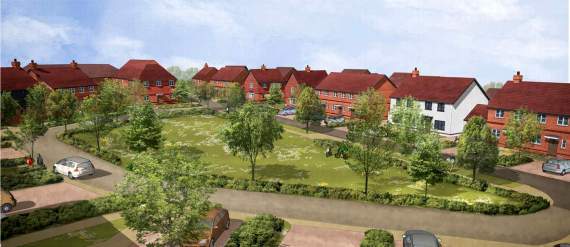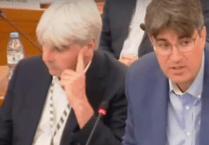In a legal dual that could redefine Waverley’s housing landscape, Tim House, a senior partner at the UK’s second largest law firm Allen & Overy LLP, is front and centre – locking horns with Waverley Borough Council and seeking to expose its Local Plan as built on a foundation of sand.
The Herald reported last week that Mr House and his wife Isobel, residents of Milford, had been given leave to challenge the council’s 11,000-home planning blueprint in the High Court this autumn.
In the wake of that ruling, the Herald caught up with Mr House to get the inside scoop on a high-stakes clash that’s leaving no holds barred.
The battleground? The Milford golf course site, pegged for a 190-home housing estate, backing on to Mr and Mrs House’s land. The catch? An old-as-the-hills covenant that’s throwing a wrench in the works.
As Waverley well know, Mr House doesn’t mince his words, slamming the council’s approach as an “affront to common sense”. But here’s the twist: his challenge isn’t just about the golf course — it’s about the legality of the entire Local Plan.
Mr House says he’s been raising the alarm about Waverley’s Local Plan since 2017, and particularly its reliance on Milford golf course as a strategic housing site to meet the council’s spiralling government target.
An historic covenant, a relic from 1929 when a larger piece of land was split up, states Mr and Mrs House cannot build a greater density of housing on their pocket of land than at the golf course, and vice versa.
The council has repeatedly claimed this covenant can be overcome as it seeks to deliver on the government’s diktat to build 590 homes per year up to 2032 in the borough – but according to Mr House, has never shared any sound legal opinion confirming this to be the case.
The former head of Allen & Overy US law division also bristled at Waverley planning portfolio holder Councillor Liz Townsend’s comments in last week’s Herald that the challenge will “divert resources away from other important planning work”.
According to Mr House, he and his legal team have sought a meeting with Waverley to discuss their concerns since 2017 – and have even shared their legal counsel with the authority. But he says successive administrations at Waverley haven’t heeded their warnings.
“We have been saying since 2017 there is a problem with Waverley relying on the Milford golf course site to deliver 180 (as it was then) or 190 (as it is now) units of their housing requirement. We have said repeatedly they have to face up to the fact there is a problem because legally that cannot happen.
“We have shown them every step of the way, openly, our counsel’s opinions, explaining exactly why there’s a problem. We’ve asked the council where have we got this wrong? Where are we wrong in the law? Where are we wrong in our analysis? Never have they engaged on that.
“At every moment they’ve said they don’t care about the covenants, all they care about is planning. But there’s no good burying their heads in the sand.
“If Liz Townsend feels frustrated, her frustration is entirely of the planning department’s own making.”

Now, having shrugged off his legal analyses, Mr House says he and his wife are left with no choice but to charge into a High Court brawl, forcing the council to face the music.
“This is my immense frustration with them, because we should have been working with Waverley cooperatively in tandem since 2017 and found a way through this for them,” he said.
“But because of their intransigence, we are left only with the equipment of the courts to challenge them.
“So when Liz Townsend says ‘she finds it frustrating’ because private individuals like us are holding up a wider social benefit, and resources are being absorbed dealing with ‘nimbys’ – which is the underlying implication – actually, the frustration should be with the people she’s representing, at the continued incompetence of their voted representatives.”
So what is the council’s masterplan? Is it holding pocket aces? Mr House thinks not. If they had an answer to the covenant issue, it would have presented itself at some point over the past six years, he said.
But what about Cala Homes, which has an option on the golf course and secured planning permission for the 190 homes in 2021? Have they received solid legal advice that the covenant could be overcome?
Mr House thinks not – Cala is speculating that the legal hold-ups can be resolved. Its betting it’ll vanish on its own. And if it doesn’t, Cala has no obligation to shell out on the land so it’s a no-lose situation.
Mr House’s view? Hold ’em accountable. He’s dead set on making the council see the light — legal obstacles and all.
His playbook? A High Court face-off. He’s spitting fire about the council’s refusal to play ball.
The stakes? They’re sky high. This scrap isn’t just about a golf course — it’s about the future of Waverley’s housing blueprint. The outcome could flip the script for how councils wrangle with legal hurdles when painting housing plans.
As we count down to the High Court’s verdict, one thing’s clear: House v Waverley is a showdown of epic proportions, proving that when it comes to housing plans, legalities are the real heavyweight champs.

.png?width=209&height=140&crop=209:145,smart&quality=75)



Comments
This article has no comments yet. Be the first to leave a comment.